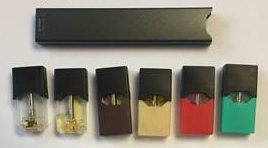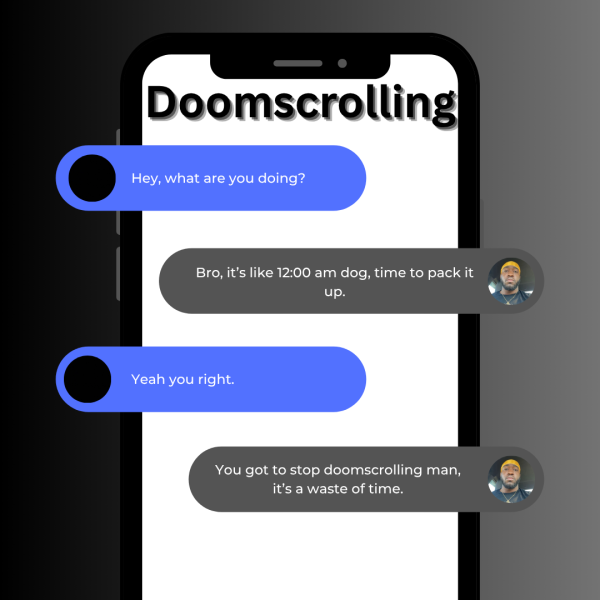Vaping: Teen use is on the rise, despite health risks
Vaping has moved from the hands of those struggling to quit smoking tobacco, to the halls of high school. With the known side effects of smoking cigarettes–cancer, respiratory diseases, etc.–addicts are trying something different.
According to the Centers for Disease Control and Prevention, the amount of teens using vape has tripled in a year.
Vape is defined as the inhale and exhale of the vapor produced by an electronic cigarette or similar device. Vaping was created by a Chinese pharmacist who, after the death of his father, sought a safe version of smoking.
However, the large misconception of vapes are that they are safe. Many are under the belief that vapor is safe, disregarding the chemicals inhaled.
“I sold my vape, but I still believe it’s safe,” sophomore Dylan Cartwright said. “It’s just water vapor.”
Vape pens come with different levels of nicotine. The kind of buzz achieved depends on the amount of nicotine in the vape juice purchased.
Besides nicotine, vape pens may contain THC oil, K2 spice or Cloud 9.
With the dangers in mind, administration treats a student vaping on school grounds as they would treat anyone using drugs at school.
“If a student is caught with vaping paraphernalia,” Lietz said, “we treat it as having any type of drug paraphernalia, because we never know what can be added into the pens.”
Students caught vaping can face a 10-day suspension for their first offense.
“Our first priority is to help a student get well, rather than just discipline,” Lietz said. “When we can, we will work with families to help them get counseling for their child.”
Much like second hand smoke from cigarettes, second hand vape is a danger. Although many don’t realize it, second hand vape includes many components that can cause lung cancer, including particulate matter and aluminum.
Side effects of using vape pens that contain harmful chemicals include hallucinations, dilated pupils, heart mis-beating and becoming lethargic.
“A 16-year-old that was vaping had to go to the ER,” Shelby Township police officer Jim Malczewski said. “It really messes you up long term.”
Vape also affects lungs, drawing more parallels to smoking. According to the American Lung Association, vaping has been linked to a condition known as popcorn lung, “a scarring of the tiny air sacs in the lungs resulting in the thickening and narrowing of the airways. This irreversible damage to the lungs is caused by a chemical know as diacetyl, which is commonly found in vape products.
“I have many patients that believe vaping is safe,” family doctor Laurie Rousseau said. “The only type of vapor that is safe to inhale is water vapor or saline. The chemicals inside vape products will cause traumatic respiratory harm, just like cigarettes.”
Last year, the Food and Drug Administration announced that the Family Smoking Prevention and Tobacco Control Act will be applied to e-cigarettes. However, as the FDA reviews these products, this won’t happen until the tests are completed in approximately three years.
“The best we can do is educate kids,” security specialist John Perry said. “They have unknown chemicals and some of the devices have blown up.”
Perry cited a story about an e-cigarette that exploded inside an Iowa man’s mouth.
Vape can also be considered a gateway drug. It may lead to doing other harmful drugs and bad behavior.
Contributing to the problem is the fact that teens have easy access to vape pens. While consumers must be 18 to purchase vape products, stores that do sell vape pens are not checking ID, which leads to possession of minors.
The local police are aware of vaping culprits, and are always looking for shops that sell tobacco to minors.
“Gas stations make a lot of money,” Shelby Township police officer Jim Malczewski said, “so they turn a cheek.”
Depending on the different type of pens and extensions, it can cost almost 200 dollars for a high end vape pen. Plus, it is required to purchase the vape juice, which adds on to the price.
Vape products appear to be advertised to minors. With “kid friendly” flavors like bubble gum and cookies and cream, it makes the minors want to purchase and try the different flavors.
Many vape pens are also being designed to disguise their true purpose. For example, the Juul looks like a flash drive or lead pencil case, making it easier for students to keep it incognito.
“You can’t tell me something’s ok,” Lietz said, “when the vehicle for delivery is designed to hide it.”
Your donation will support the student journalists of Utica High School. The Arrow appreciates your help to keep us up and running.










